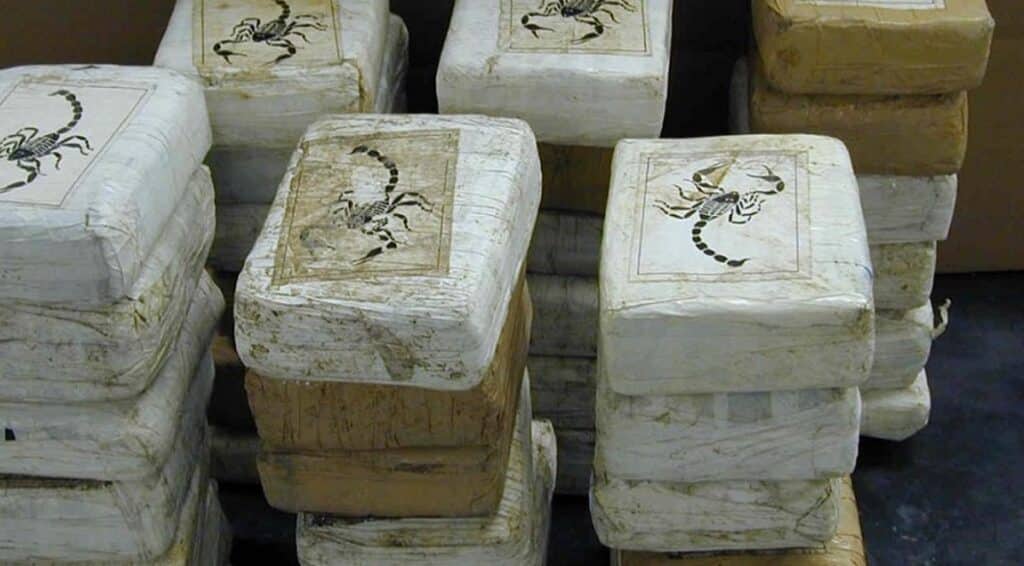
Colorado State Patrol’s Special Division Works Toward Getting Drugs Off the Streets
Illegal drug use has been an issue that has plagued the country for decades. The war on drugs that began in the 1970s has done little to stop illegal narcotics from entering the country. Cartels use various methods to sneak the drugs across the border and then once they get into the U.S. they get distributed all across the country with drug smuggling pipelines. Highways and interstates across America are used to transport illegal substances to and from major cities in the U.S.
Colorado has been no stranger to drug activity as authorities have said that Interstates 25 and 70 running through the state are major drug trafficking channels. Last March, The Maverick Observer reported that Colorado is number one in cocaine use across the country. Large amounts of other drugs like fentanyl have also been found in the state in increasing numbers in recent years.
Colorado State Patrols Special Unit Focuses on the States Trafficking and Drug Smuggling Problems
According to the Colorado State Patrol (CSP) website, the law enforcement agency’s Smuggling and Trafficking Interdiction Unit (STIS) focuses on the issue of human smuggling and human trafficking in the state. The STIS unit is dedicated to assisting CSP achieve the goals and objectives of Senate bills 206 and 207 passed in 2006 that made human trafficking and smuggling felonies.
The unit also focuses on fighting the smuggling of drugs and other contraband on Colorado’s highways. The specialized team works to locate and stop criminal organizations that bring illegal drugs and other items across the state’s borders and to other parts of the nation.
Last year, CSP issued a press release highlighting the work of the STIS in 2021. “The mission of our Smuggling, Trafficking, and Interdiction Section (STIS) is to relentlessly pursue those who transport illegal firearms, narcotics, illicit bulk US currency, and human trafficking victims on Colorado’s highways,” said STIS Captain Bill Barkley of the Colorado State Patrol. “The pandemic has not slowed the massive amount of narcotics that are coming into our state every day to be distributed to cities all over Colorado. We are fighting this war on drugs every day in an attempt to dismantle drug trafficking organizations that are smuggling narcotics into our state. In order to do this, you must seize their deadly drugs and their illicit US currency to stop their operations. In 2021, seizures have taken nearly two tons of narcotics, 68 illegal firearms, and over 3.1 million in illicit US Currency.”
The press release stated that the number of cases reported in 2021 dropped 3 percent from the number in 2020. But, the STIS team actually seized more narcotics by weight than any other year within a five-year comparison period.
In 2021, the team seized 1,434 pounds of methamphetamine, which was a 291 percent increase from 2020. The team also confiscated 151 pounds of fentanyl powder, which was a 403 percent increase from the previous year. The team also seized 13,842 fentanyl pills along with other drug seizures.
Additionally, STIS took away more illicit U.S. currency from the state than it had in previous years. In 2021, STIS found $3 million in illegal currency, which was a 16 percent increase from 2020, and a 143 percent increase between 2017 and 2021.
“The 2021 currency seizures were a result of 53 loads, down from 65 loads in 2020,” the CSP press release stated. “Simply put, that averages to over $59,000 per load in 2021 and approximately $17,500 more each load in 2021.”
Out of all of the seizures made by STIS, 174 of them originated in Colorado and 205 of them were drugs and other illegal contraband that were headed to the state. The items seized that were destined for Colorado included 217 pounds of cocaine, $433,810 in illicit U.S. currency, 52 pounds of fentanyl, 10 guns, 137 pounds of heroin, 56 pounds of cannabis, and 681 pounds of methamphetamine.
Drug Busts on Colorado Highways Continue into 2022
The statistics on drugs found in 2021 might paint a picture of what will happen in the future. According to KDVR Fox 31 out of Denver, CSP had seized 402 pounds and 55,908 pills of fentanyl by July 10, 2022. In comparison, state troopers only found 11 pounds of fentanyl in the entire year of 2019.
According to the Drug Enforcement Agency (DEA), it takes a very small amount of fentanyl to kill a person. It is estimated that one kilogram of the drug could kill up to half a million people.
One of the busts made last year recovered 114 pounds of fentanyl. According to STIS Captain Barkley, that amount of fentanyl seized could have saved over 26 million people.
Colorado Interstates Continue to be Main Drug Trafficking Roads
According to the Denver Gazette, Interstate 70 running east to west through Colorado is a major drug trafficking pipeline for narcotics coming from Mexico or California. “I-70 and I-25 is the fatal funnel so to speak,” Rocky Mountain DEA Special Agent in Charge Bob Bessel told the Denver Gazette. “Colorado is a critical trans-shipment point.”
In the article, Captain Barkley said that there are more illicit drugs seized in traffic stops on Interstate 70 than on any other highway in the state. But, he did say that there are more troopers assigned to cover the “hot stretch” between Grand Junction and Denver than other parts of the state.
The captain said that 70 percent of the narcotics traffic the STIS sees is headed to Denver and the other 30 percent is planned to go to cities like Chicago or Minneapolis. He also said that 90 percent of the drugs that enter the U.S. originate from Mexico and are smuggled across the border.
“I’m telling you right now narcotics are flowing into our state and across our state every hour of every day,” Barkley was quoted saying by The Denver Gazette. “And whether or not it’s on I-70 or on I-25, or it’s on secondary highways coming into our state, I would bet every hour of every day there is something.”
Colorado Highways Also Get Used for Human Trafficking
In addition to catching drugs being smuggled within the state, the STIS also works to crack down on human trafficking issues. According to the CSP website, STIS was created to help stop human smuggling and they work with federal agencies and non-governmental agencies “to share case information and form teams to apprehend suspects, locate and identify victims and on occasion, discover other criminal activity involved within the criminal/suspects social circles.”









